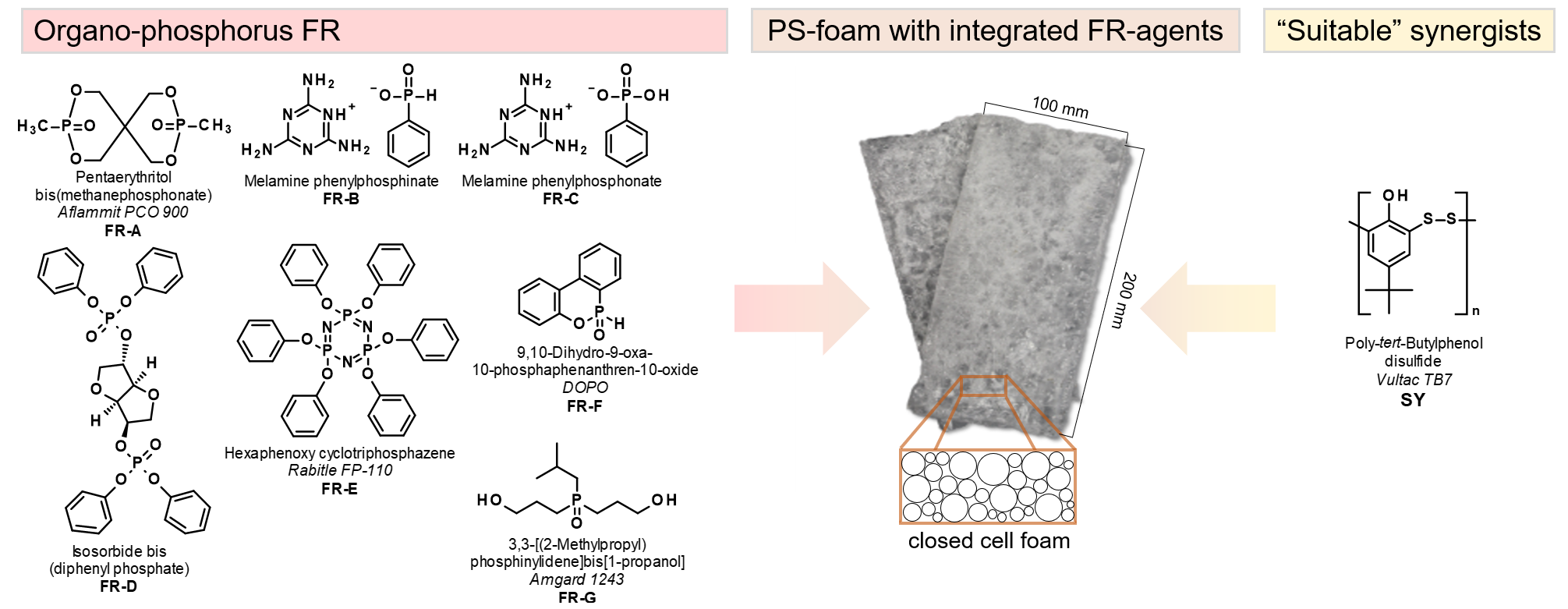Novel halogen-free flame retardants
The development of novel phosphorous-based flame-retardants has emerged as a topic of high relevance in applied chemical research over the last decades. This development is market-pull as there is a high demand for replacing the widely used halogenated flame-retardants due to increasing legislative restrictions and a general shift towards more sustainable materials. Our current research addresses these developments in different projects.
Comparative investigations on the flame-retardant efficiency of organo-phosphorous compounds in polystyrene foams for building and construction applications
Researchers: Michael Luksin, Florian Bärmann
Polystyrene is a widely used polymer in many applications, e.g. as foam insulation in building and construction. It possesses a wide range of favourable properties, but exhibits at the same time very low resistance to flames and fire.[1] In order to improve its resistance to fire, halogen-free flame retardants for polystyrene foams have been described in recent patents.[2] Specifically, phosphorus organic compounds and synergists of the general structure R-S-S-R were shown to be highly efficient in such foams.[3] For aromatic disulfides in particular, a strong flame retardant effect was observed.[4]
Our present research investigates the flame-retardant efficiency of different organo-phosphorous compounds in polystyrene foams with tert.-butlyphenol disulfide (PDBS) as a synergist. For this purpose, a selection of polystyrene foams containing commercially available (FR-A, -B, -F) as well as literature-described (FR-C, -D, -E) organo-phosphorus flame retardants have been prepared and used. The flame-extinguishing effect of the produced foams was determined in fire tests according to DIN4102-1 (B2). Additionally, the intrinsic flammability of those PS formulations was investigated by limited oxygen index (LOI) measurements, and their thermal degradation behaviour was analysed by thermogravimetric analysis (TGA). Furthermore, first results towards a mechanistical understanding of the mode of action of the tested flame-retardant systems in polystyrene foams is presented.
Results from the fire tests according to DIN4102-1, B2 and from LOI indicate that the different chemical environments for the organo-phosphorus flame retardants in the investigated polystyrene foams provide no detectable influence on the flame-retardant effect. Current work adresses the flame retardant mechanisms involved to explain those findings.
References: [1] Ballast. D. E.; et al., US3188295 (A) 08.06.1965; [2] Bellin, I.; et al., WO2012/089667 A1, 05.07.2012.; [3] Wagner, J.; et al., Polymer Degradation and Stability 2016, 129, 63-73; [4] Pawelec, W.; et al., Polymer Degradation and Stability 2014, 110, 447-456.

